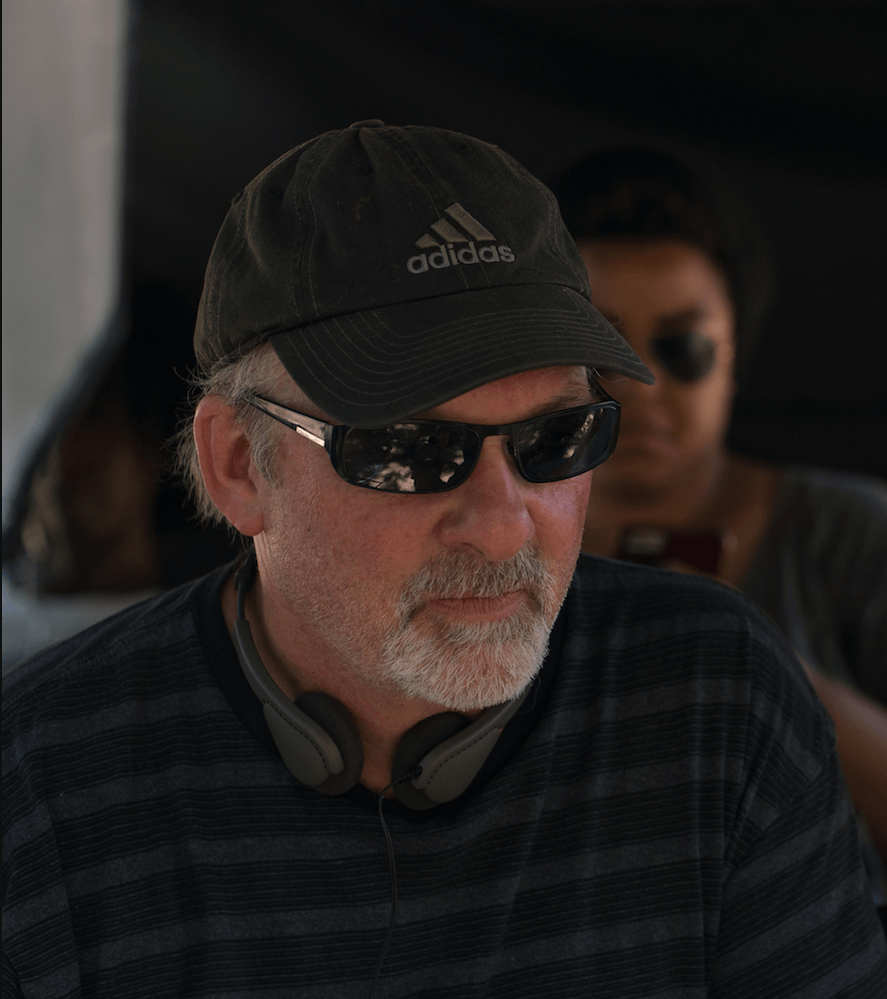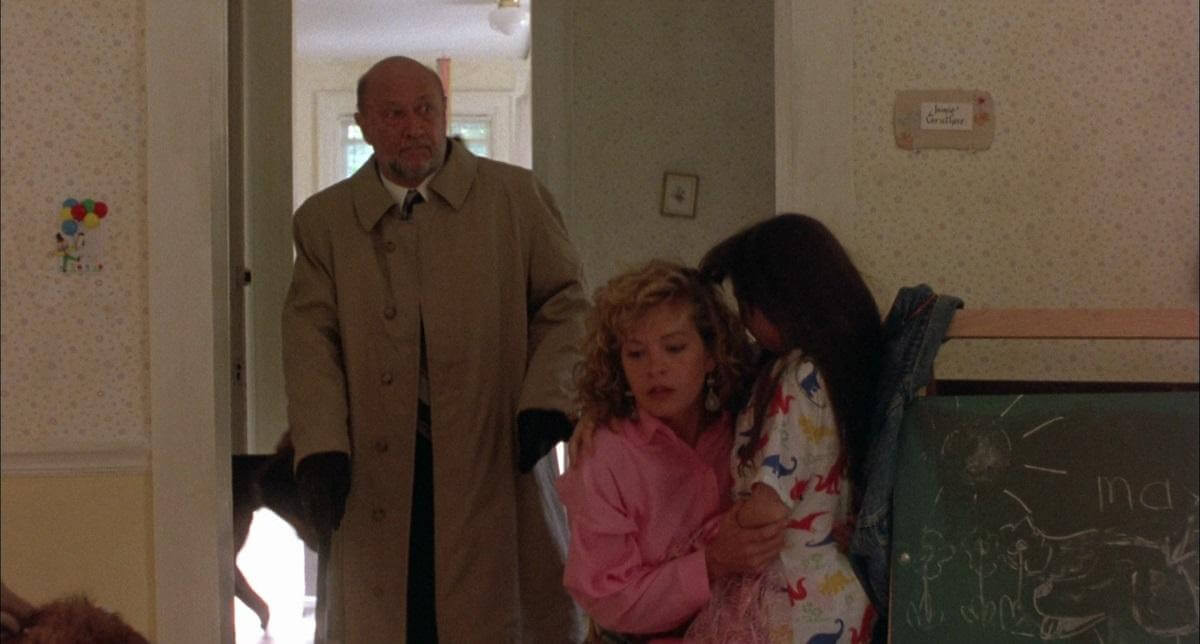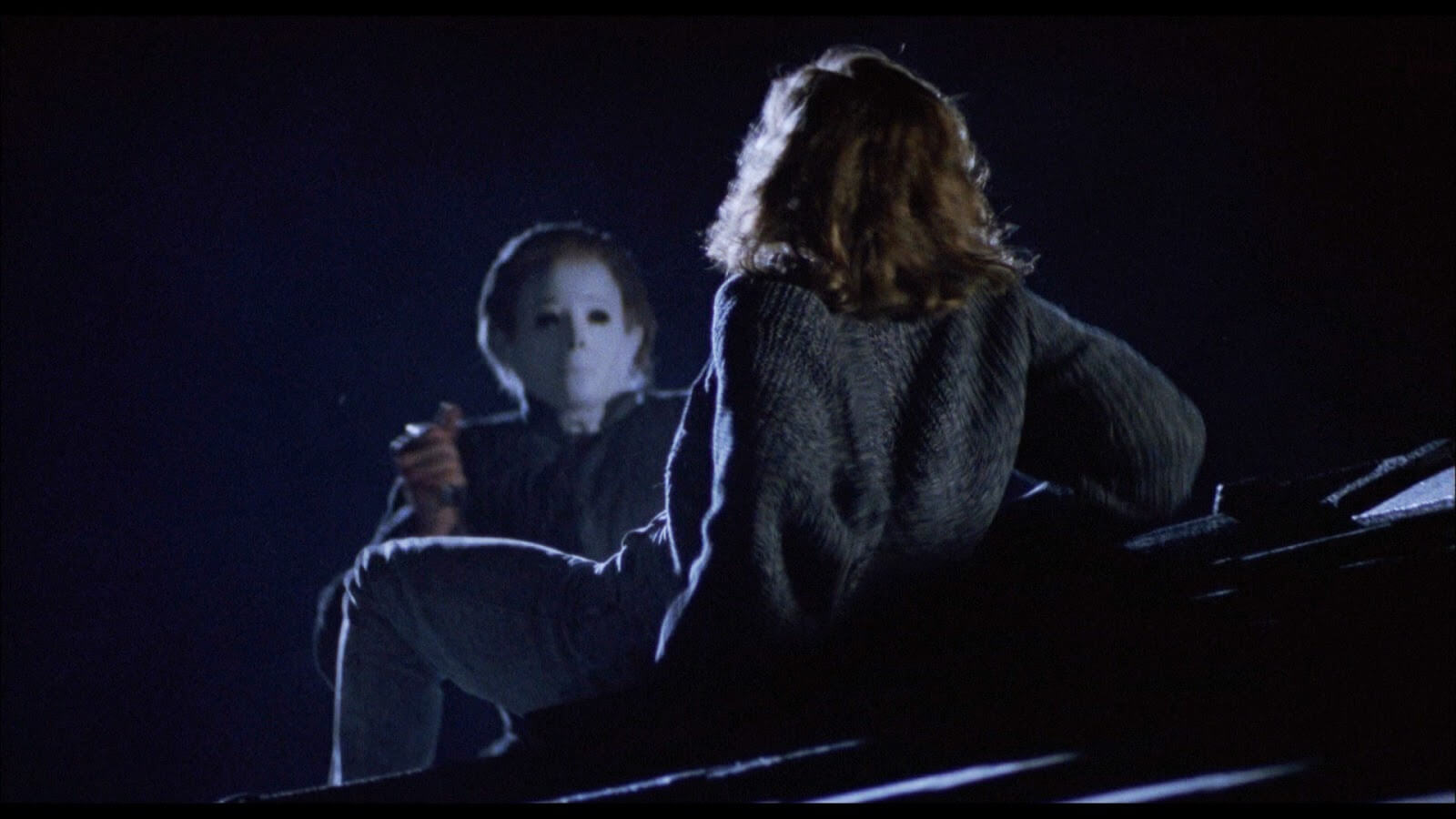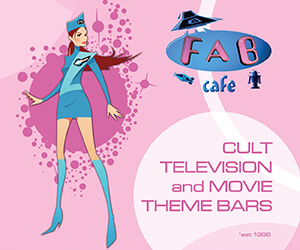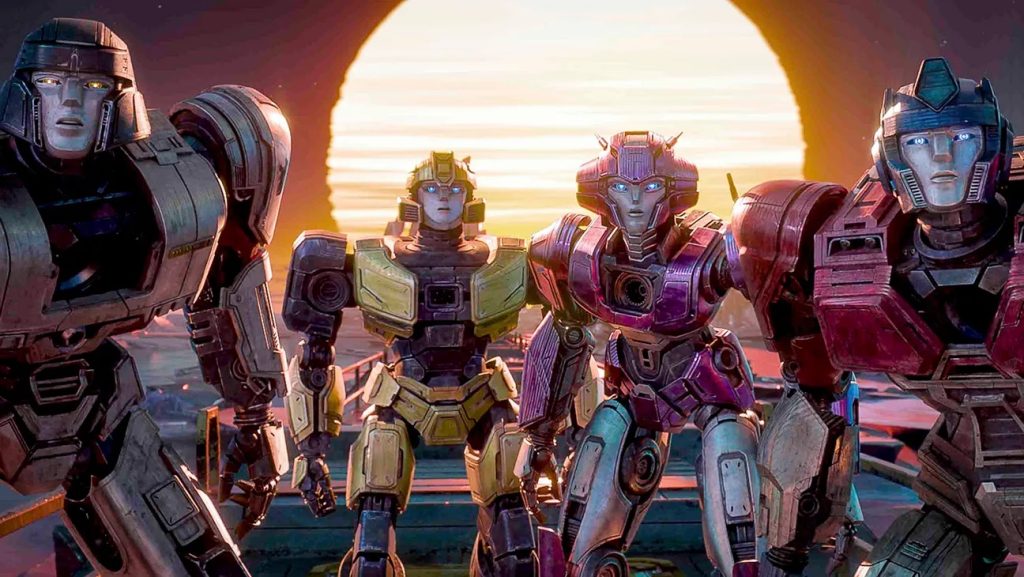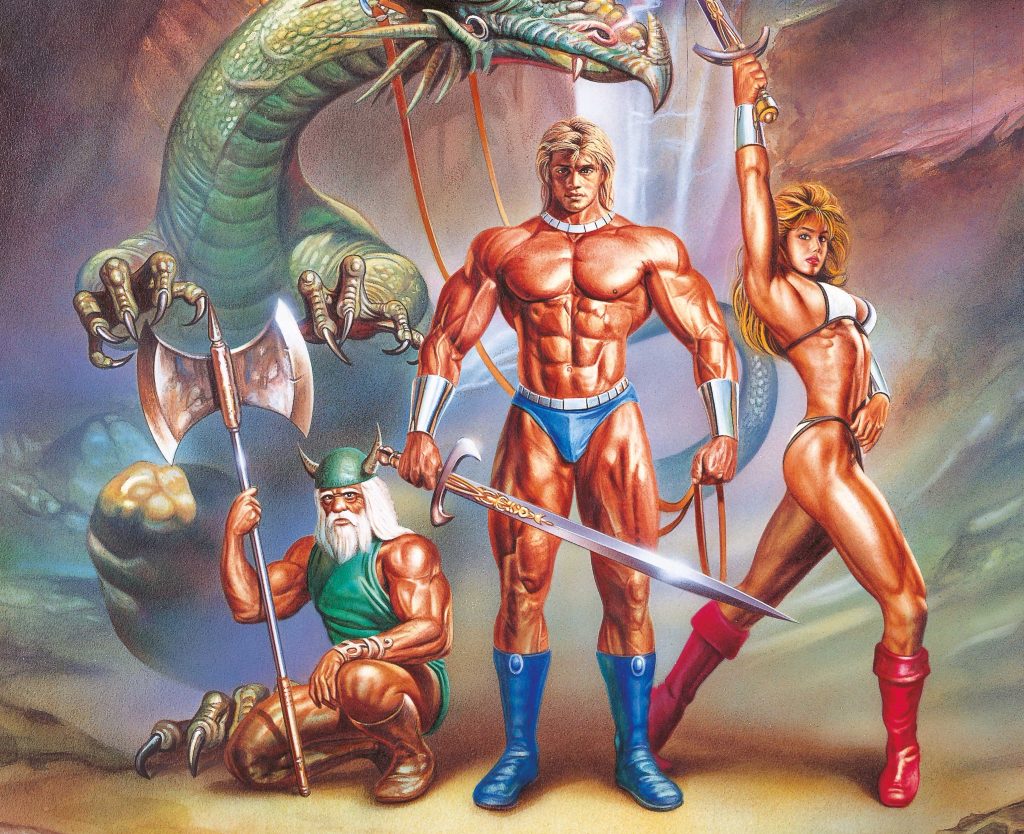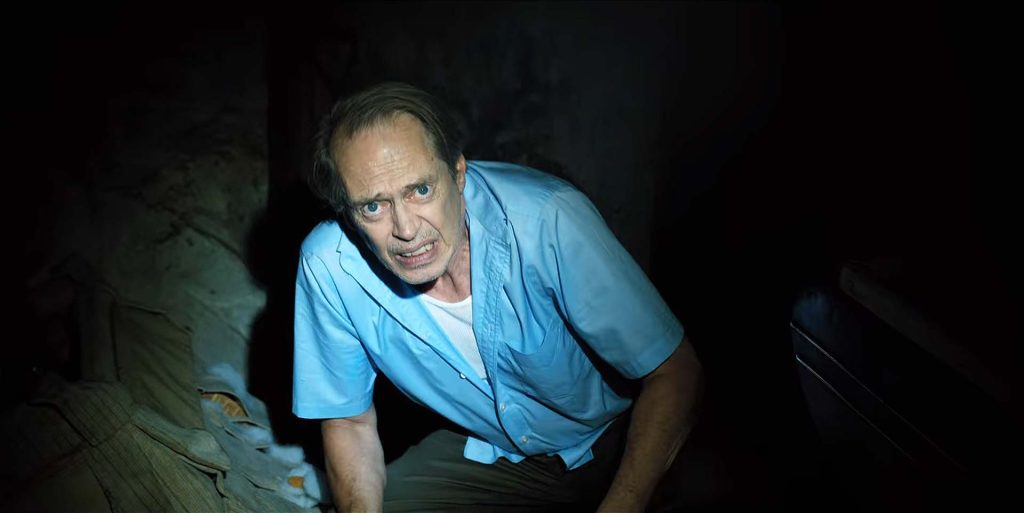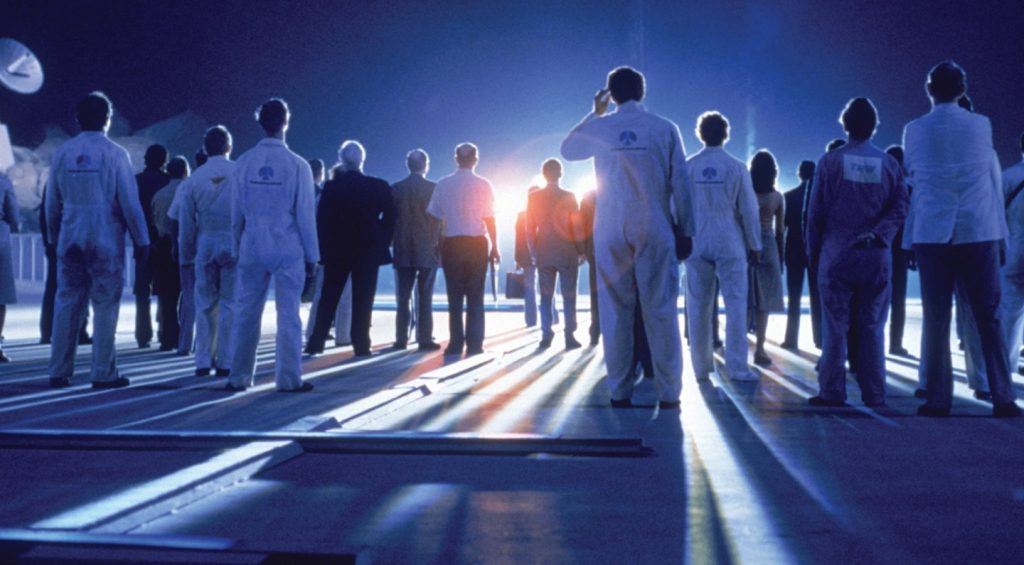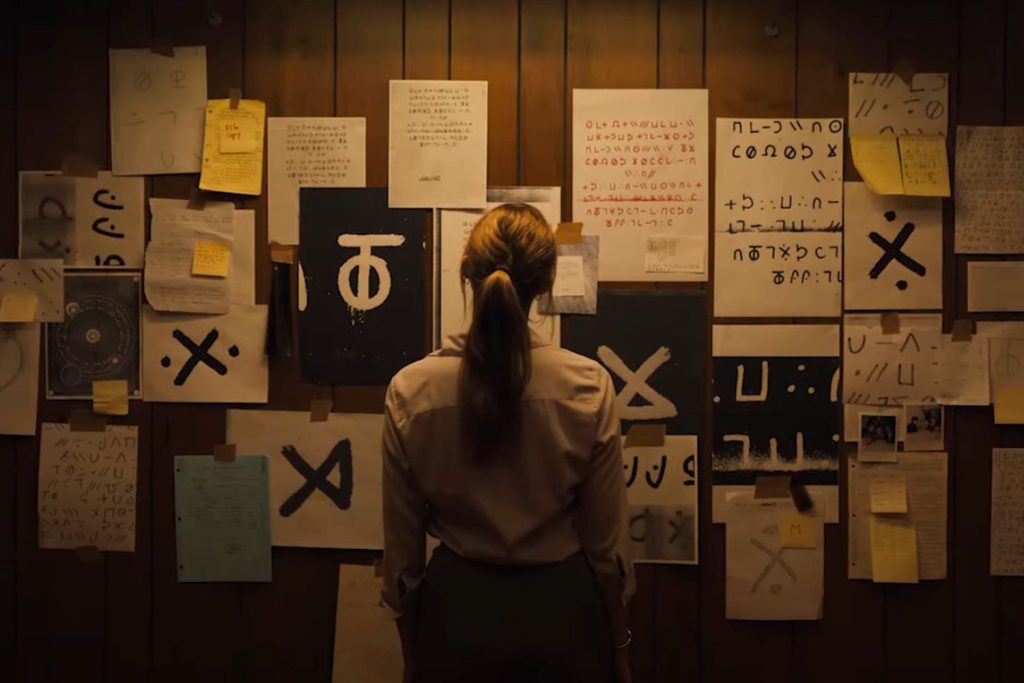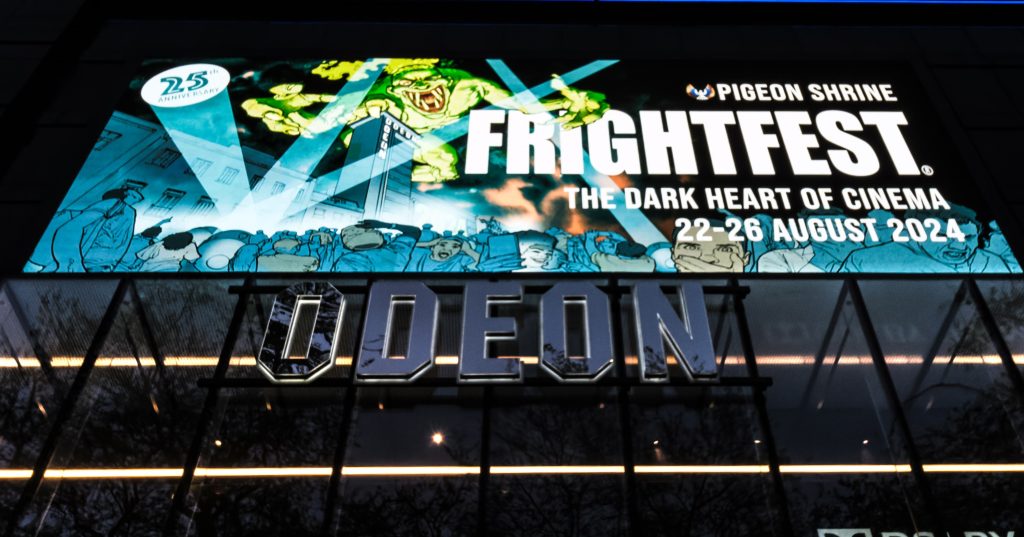Following the initial poor response to the Shape-less Halloween III: Season of the Witch, the decision was made to bring back Michael Myers. The person tasked with overseeing Michael’s revival in Halloween 4: The Return of Michael Myers was Dwight H. Little, who was at that point beginning to make a name for himself as a director to keep your eye on. As part of our continuing look at the Halloween franchise so far, we caught up with Dwight to talk about what many view as one of the very best offerings in the series, how he approached Michael’s resurrection, why that movie stood out from the similar pictures of the day, his time working with Robert Englund on The Phantom of the Opera, and a whole lot more.
STARBURST: How did you end up involved in Halloween 4: The Return of Michael Myers?
Dwight H. Little: The Akkads were looking for a director, and my manager at that time was aware that they were looking and submitted my director’s reel. The thing was, I’d just shot a small movie in India [Bloodstone]. [Producer] Moustapha Akkad was very taken with the fact that this had been a very gruelling overseas shoot. He had done Lion of the Desert and a couple of movies as a director, so he was very interested in that. Interested enough to at least have me come in for a meeting. They sent me the treatment that they had – which I didn’t understand, it didn’t make any sense – so I pitched something very different. I had a writing partner I’d been working with on other things – Alan McElroy. The director’s reel just cracked the door open, but honestly I think it was the pitch on the take of the movie that really got them intrigued.
What was the story like when you first discussed the picture and how to go about bringing back Michael Myers?
We were trying to decide how to bring Michael back. At the end of Halloween II, there had been this big explosion. We felt that the only way to realistically release Michael Myers into the world was to do a prison transfer. If he’s in some sort of insane asylum – even if he survived the blast – how are you going to get him released? We always wanted to be realistic and not just part of some horror movie trope. The reason he got out of the ambulance is because we needed to get him free. The reason he goes to the diner and kills the mechanic is so he can get his outfit, his coveralls. The reason he blows up the gas station is so that we can take the telephone lines down. The reason he goes to the drugstore is so that he can get his mask. The reason he throws Bucky into the powerlines is so that we can knock the power down in the town. So, we wanted to make everything about his slow approach to Haddonfield. We wanted everything to be believable, we didn’t want it to be tongue-in-cheek. I think that was the main difference; they were doing something that was tongue-in-cheek and a bit self-referencing about Halloween and horror movies in general. We didn’t want to wink at ourselves. Let’s just tell a real thriller – almost like you’d do a Silence of the Lambs sort of thriller – where it’s really happening, Donald Pleasance is taking this seriously, and the town is in real danger. I think that the tone had a lot to do with it, and I think our story, we always wanted to drive it by decisions that were realistic and not just there as a movie device.
Moustapha Akkad was famously the biggest champion of Michael Myers, so how easy was it to convince him on your vision for the film?
Well, it went very well. They listened and said they’d get back to us, and I think he and his team really looked at a number of different presentations; we certainly weren’t the only one. I think there was a respect to the fact that we were taking Michael seriously – not just as a movie monster, but as this storm coming to Haddonfield. They liked the logic of it, and I know that was part of it. Every time we would build to a sequence – the rooftop sequence, the locals on the hunt – everything grew from a place within the realms of a horror movie but with a logical explanation.
And that was a key component of why Halloween 4 was different to the similar movies of the time; the fact that it tried not to go too tongue-in-cheek, too referential, or too gory for sake of being gory.
That was important, I think, because we did want to do a suspense thriller. There’s a scene where Donald meets the old man driving the truck early on. We had to figure out a way to get him to Haddonfield as well. That scene was there to help set up the mythology of Michael Myers. Even though Michael isn’t in the scene, we’re really talking about him and thinking about the face of evil. You really get a sense of the weight of things. There’s a wonderful scene where Donald Pleasance goes over – the ambulance has crashed in the river – he goes out from behind the ambulance, and he knows what’s happened. He’s the only one that knows what’s coming. It’s acting, it’s nothing campy, it’s just good acting.
Throughout the Halloween franchise as a whole, Donald Pleasance as Sam Loomis is vital to conveying why we should all be terrified of Michael. Particularly here in reintroducing The Shape and the threat that he brings. How was it to direct a figure as legendary as Donald Pleasance?
I was very keenly aware, as a student of film, of The Great Escape and that indelible performance. I was a little bit in awe, honestly. He held his own with James Garner in a Steve McQueen movie. Even here, he was Donald Pleasance. He carried a lot of film history and he carried a lot of weight as an actor. I was excited, a little intimated, but once I started to work with him those trepidations fell away. I found that he was open to direction. With working with stars, you have to find out what is their comfort level. Do they want a collaboration and really talk through everything, or do they want to just be left alone? Each one is different. I felt like he was very open to a collaboration, even though it was his signature character. He wasn’t, “Oh, I know how to do this, just leave me alone.” He wasn’t like that at all. He wanted to talk about the scene, what we could do better, how we could approach it. He was an actor, and he wanted to dig in. I did notice that after about four or five hours he would get quite tired. I don’t know if that was age or he was suffering with something. I started working with the AD to make sure we would do anything demanding in those first four to six hours, then for the last few hours just take it easy with him. As he got more and more tired throughout the day, he’d start to get a little more impatient, a little cranky. But he was not a young man. He was artistically interested, he wasn’t just phoning it in.
On the other side of the fence, while Donald Pleasance was a veteran of the industry, so much of Halloween 4’s key cast was made up of younger actors – especially an eleven-year-old Danielle Harris as the lead. They say to never work with animals or kids, but how was that experience for you?
A few years later, I did a project called Free Willy 2. It was hysterical, because it was whales, dogs, kids. But on Halloween 4, we had gone to New York and found her [Danielle Harris] in an audition. We weren’t finding her in Los Angeles. There was a casting director in New York, and she put a session together with New York actors. We were looking outside the pool of talent here. There were some candidates, but we weren’t over the moon about them. Then we got to New York, and Danielle and her mom came in. Quite honestly, we knew the minute she walked into the room. We knew right away. I have to say, as much as being her director, I just needed to be her parent. She was so smart and so precocious and so aware. If you explained something clearly, she got it. I wish I could say it was a big struggle, but honestly it wasn’t. She really just got it right from the beginning. She understood the technical part of it, she learned how to find her marks and how to work with the camera, she was tireless. No whining, no tears, no tantrums. It was quite unbelievable, honestly.
One of the stories out there online and amongst fans is that Melissa Joan Hart was up for the Jamie Lloyd role with Danielle. Is there any truth to that?
I do not have that memory. I don’t remember Melissa Joan Hart at all. I know for Ellie’s part [of Rachel Carruthers], it was really down to the wire. There was another candidate for Rachel, and it was down to Ellie and one other that the studio was very keen on. I was really pushing for Ellie. I persuaded Moustapha to have a screentest because I thought it was a very hard decision to make. We did a screentest on 35mm film, the full thing, and then projected it on a screen – it wasn’t just a video – and when we looked at the screentest, that’s when Ellie really shined. A lot of the more subtle things that she was able to do with her eyes and with her empathy came through. That really helped us make that decision. To me, in my memory, Jamie Lloyd was always Danielle.
There was reportedly an extra day of shooting added to Halloween 4 in order to add more gore. Was that the case, and what scenes were added to or tweaked?
That is absolutely true. There were three. There was the sequence where Kelly [Kathleen Kinmont’s character] is impaled against the door. We were running out of time, and they way it was shot made it hard to understand exactly what had happened. It was partly my fault, but the way the edits came together made it a little confusing. So, we went back and we shot from the other side of the door and just did some pick-up shots. When that came together, it was crystal clear, and the impact was much better. That was just a fix. There is a scene where Michael’s hanging on to the top of the pickup truck, and one of the townies is driving. The close-up of his neck being torn apart, that was a pick-up to make it a little more graphic. We had done it in a wide shot, so we didn’t really have the gore. That was then embellished. Then, the final one, we did a shot of the thumb in the forehead. We shot the original version, but we didn’t have the right prosthetic yet. It’s a very simple device, just a retractable thumb like you’d have a retractable knife or a retractable sword – but when it’s done properly it’s hugely effective because your mind does it all for you. So, we had to go in and do close-ups of that to really show the thumb entering the forehead, which is shocking, but it throws the audience off at the beginning of the movie because they’re shocked. I guess that maybe enhanced things as we were able to do it in a much better way. Those are the three scenes that I remember being involved in to enhance the gore, to make things work better.
The ending of Halloween 4 is one of the very best in the franchise and stands out as a truly great horror movie finale. And Donald Pleasance conveys the fear so well of “oh no, this has happened again.”
We did Jamie’s coverage first at the top of the stairs, and when we were trying to shoot Donald down below – and this is one of the few things I asked him to do – he came to the bottom of the stairs and played this look of absolute horror. It was very good, but in a sense it was a very internalised moment; it was his own nightmare coming back. I think he had thought this through as Loomis’ nightmare coming back. It was late at night, we were all tired, as we always were, and I took him to one side and said, “I don’t think it’s enough, Donald. I think it’s good for your character, but I don’t really think it’s going to be enough for the audience.” I could see him resisting a bit. He had clearly worked this out in his head, he clearly had a plan. I said, “Let’s see if we just do one take, let out all the stops, just give me something outrageous. If it’s too much, we’ll just put it away and say it’s too much.” If I said that to an actor early in a movie, I don’t think they’d have believed me or trusted me. But he trusted me by then. He came around to the bottom of the stairs and let out an almost primal scream. I said, “Cut!”, and he kind of, not collapsed, but he sort of sat down. I was just stunned, everybody in the crew was stunned. I said, “That’s enough, let’s just call it a night.” I think it was hard for him, because that’s a very difficult place to go to as a human being to really make that work. But I knew when he did that we had something very special. It was just good fortune, a little bit of good instincts on my part, but also just him being willing to take a chance.
Was it yourself that came up with that ending?
It was primarily myself and Alan. We felt like we’d given it away when she touches Michael’s hand near the end. She walks over to him and they touch hands before she walks back. He gets up and they shoot him into the mining pit. We were worried because of that close-up of the touching of the hands, “Oh, well the audience is going to see this coming a mile away.” But oddly enough, they didn’t. It didn’t ruin the gag. I was thinking about not having that scene of her holding her uncle’s hand like that, so that we could preserve the shock of the end. Oddly, it didn’t hurt the situation for some reason.
You weren’t involved in Halloween 5: The Revenge of Michael Myers, but did you have any plans on where you’d have liked the story to go following the ending of Halloween 4?
Moustapha did ask me to do that one. It was difficult for me, for a couple of reasons. One, I thought we’d really kind of ‘hit it’ and that lightning doesn’t strike twice every time. This is why great directors make bad movies all the time. It’s a combination of great cast, great scripts – all of these things have to come together. Alan and I did talk about it, though. What we would have done was to work on the relationship between the sisters – between Danielle and Ellie – as I do think that was the core of the movie then. We clearly would’ve gone in a very different way, but it really wasn’t up to me to decide at that point because I didn’t have time to participate. Plus, I was given an offer to do a very interesting project with Robert Englund.
Phantom of the Opera?
Yeah! It was a very intriguing movie and, of course, it’s Robert Englund, so that was a big draw. We had a little more money and a little more time. It’s like a Hammer movie, and it’s very well produced, a very big, grand-looking movie.
From interviewing Robert a few times over the years, he seems like such a nice guy. How was it to work with him?
He really is a great guy. And like Donald Pleasance, he’s really an actor’s actor. With him, you really have to know your stuff, you can’t just phone it in. You really have to be working at his level. He’s thinking at every moment. He’s a classically trained proper actor. The movie, as you know, has huge fans and has huge detractors, so it’s a very polarizing movie. There’s a lot of Phantom aficionados who just hated it because it’s not the Andrew Lloyd Webber movie. But I actually get more comments about Phantom than any other movie I’ve made. The people who liked it, loved it. I don’t know why it’s so polarizing. I guess it’s because it’s a brand that’s been so known for so many years, so many decades. By the time they were thinking of really moving forward on Halloween 5, I was kind of involved in this other thing – so it was hard for me to do both.
As well as Robert Englund headlining The Phantom of the Opera, Jill Schoelen was also starring. At that time back in 1989, they were both huge names in the horror world. When it got to the early ‘90s, Jill just seemed to stop doing as much, which seemed like a real shame as she was a major favourite of so many genre fans.
She had a great screen presence, and she had this very husky, interesting voice, and she was certainly a very pretty girl. I don’t know exactly what went on there, why she didn’t keep going. I know that she went down to do some movie called Popcorn that wasn’t a great experience for her. She might’ve been getting married or maybe she had some personal things that were going on. I agree with you, I thought that she could’ve had a bigger career. She may have stepped away, I’m not sure.
Bringing things full circle and back to Halloween, as someone who’s been directly involved in the series, why do you think this franchise is so special to so many people?
I do think it’s because it’s set in a real and very recognisable world. It’s not as out-there as Jason or Freddy, it’s not sci-fi, it’s not Hellraiser. A lot of people recognise these streets and houses. The characters live in an actual town, people recognise this world. There’s problems with dating, there’s problems with popularity, there’s all kinds of teenage problems, but not in a goofy way. Michael, you can’t see his eyes, you don’t know what he wants, you don’t know why he’s there. It’s like a small-town drama, and then you add this boogeyman to it. I think people recognise the world, and it’s something that when you see it in a theatre or on TV, you kinda remember that. A lot of the horror movies now – and they are wildly successful – are concept movies. So you have a larger hook, like Lights Out or A Quiet Place – which is so good – but here you had a bunch of people in a small town and this thing shows up.
It’s such a basic concept, yet brilliant in its simplicity. A lot of the terror comes in what you don’t see, or in the tension that’s slowly crafted. And it shows in how after Halloween 4 the franchise seemed to lose that element a little, which ultimately saw the series falter.
I think the new one will be great. They’ve gone back to basics. You know, nobody really knows what happened with those two Rob Zombie movies, no one knows what that was. That was a really strange approach. Not to be too much of a prude about it, but it was way too vulgar. It was so vulgar and so over the top. I don’t think people are comfortable with that level of language, and I didn’t think the tone was right. If you look at the first Halloween, it’s just Jamie Lee and her friends. It’s not trying to be some super edgy, fifty million F-bombs film. It’s not supposed to be super dark and edgy in that way.
While the first of Rob Zombie’s Halloween movies certainly had some good moments, nobody really wanted or needed to know the origin story of Michael Myers or the reasons for why he is like he is.
In Halloween 4, we had to answer this question at some point. Alan and I were talking, and I said, “Well, what is it?” Alan said, “I think he’s just evil on two legs. We’ll just say that.” There’s a scene in the police station where Loomis is talking to a cop, and Donald Pleasance finally says it, that he is just evil on two legs.
One other interesting film you were involved in was Free Willy 2. How was it direct and oversee a shoot with so much water and mechanics involved?
Well, it was incredibly difficult. But I had the resources of the studio. The one thing about a studio film different to an independent movie, you’re serving so many masters but you do have this massive army of technicians and hugely professional people. We had barges and ships, it was an unbelievable production. You had to picture a boy and a whale, the simplest picture in the world, but if you look just outside the frame there’s hundreds and hundreds of people; there’s divers, animatronic operators, safety people. It was just a huge production. But you don’t feel that when you watch the movie; it’s just a kid out with a whale. And Michael [Madsen] was great, so patient. There were scenes where you’d have to do take after take after take, and the actors are just standing there in the background. It’s very boring for them, but they knew the drill, they knew what was going on. There’s one scene where the boy, Jesse, comes out on the edge of the dock and he has to feed this whale some fresh salmon. It looks simple enough, but the whale was a legitimate 20-foot animatronic, mechanical beast that’s tethered to the ocean floor. The sound of them operating this mechanical whale is deafening! So, all the dialogue is replaced. It was just brutally difficult to do, because you’re throwing a fish into the mouth of an unreal thing but it has to look life-like. That was a very challenging movie, but it’s a very sweet movie. It really plays well, it has a good environmental message, and it came together just fine.
In terms of TV, you’ve been involved in so many genre favourites. From Freddy’s Nightmares, to Millennium, to Sleepy Hollow, to From Dusk Till Dawn, to Arrow, to Marvel’s Agents of S.H.I.E.L.D., to The X-Files. As a director, how is it going from one show to another?
It really does take some getting used to. I was brought to television really with Millennium, and Lance [Henriksen] was so great, and the people involved, in making that were so welcoming to help me figure out that universe. I had a wonderful experience with that, then I was very lucky to work with Dave Kelly on a show called The Practice, which was an Emmy-winning show. It’s funny, but it all comes down to how my experience was with the lead actor. That’s the marriage, that’s your essential relationship. The one that I really am very fond of was Sleepy Hollow, and that’s because Tom Mison is such an astonishing actor and a complete gentleman. When you show up to work and you have a collaborator who’s not only wildly talented but is also a gentleman, it just makes the whole thing so creatively great. That’s why Millennium was great, because of Lance. I’ve had experiences where the lead is talented but maybe not my type of person, and then there’s tension, there’s disagreements, and then it becomes more of a chore because you’re not really loving your day, you’re just sort of fighting. And there’s a lot of that. Hopefully, there’s more of the good than the bad.
What can you tell us about what you’re working on at the moment or have in the pipeline?
The one that I want people to know about – it wasn’t widely released – is a movie with Robert Patrick and Heather Graham called Last Rampage. It hasn’t come out in the UK yet as far as I know, but it’s on Netflix in America. When it does come out in the UK, I’d love people to check it out. We made it really for next-to-nothing, but it’s a fascinating story. It centres on Robert and Heather and the late John Heard. We had really good actors, and it’s a fascinating true crime story. Because of that film, I’ve had some opportunities. I’m really working on scripts right now, and one of them is a horror thriller. Then, I have another one that’s an action piece that I’m trying to get casting for right now called The Hardest Place. That’s the same writer, that’s Alan McElroy again. We’re planning to shoot that in Louisiana. We’ve got all of our ducks in a row, we’re just waiting for that last piece of casting to come in. I’m just honestly moving now from television back to independent features, and that’s sort of where my heart is. As you know, it’s more for the director, whereas television is a little bit more for the writer. Movies are still a director’s medium.
For more on Dwight’s work and his upcoming projects, head on over to https://dwightlittledirector.com.

